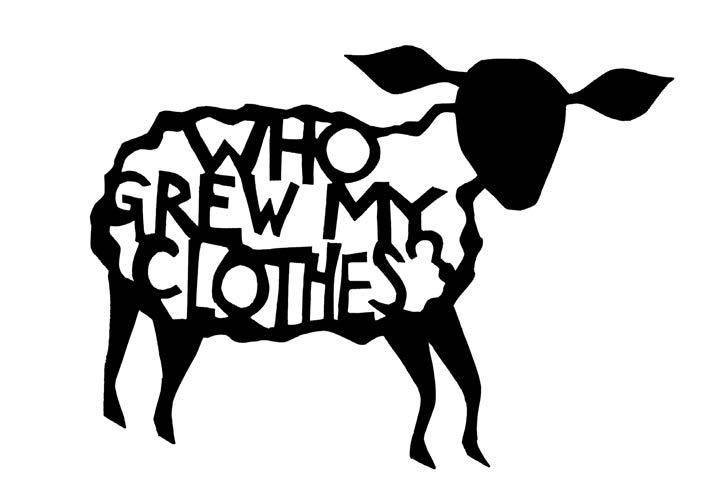




We want to welcome and highlight producers who have joined our Northern California Producer community since the publication of the previous issue of this newsletter. As always, you can find information about local fiber, dyes, and skills within our community, alongside direct links to contact or support their enterprises, in our Producer Directory: fibershed.com/producer-directory/
• Danu Organic – on a mission to produce the healthiest clothes at an accessible scale, Sarah Danu started this all ages and genders line after connecting with Sally Fox’s Colorganic® cotton and intends to continue designing with heirloom-quality materials and beautiful, durable designs.
• Earth My Body – embracing the knowledge that our bodies are an extension of the Earth and then Earth is an extension of our bodies, Cory Gunter Brown teaches natural dye workshops to adults and children and produces a selection of naturally dyed items every month; the resulting ecologically printed pieces are stunning illustrations of the power of plants.
• Home Spun Waldorf Dolls – inspired by the natural beauty of Sonoma County, Christina Penrose crafts handmade dolls with local and natural materials for children to embrace play and imagination while seeing themselves reflected.
• Kirsten Sedestrom – drawing inspiration in part from her grandparents’ mercantile, Kirsten is bringing her expertise in design (most recently at Coyuchi) to design consultation services as well as an
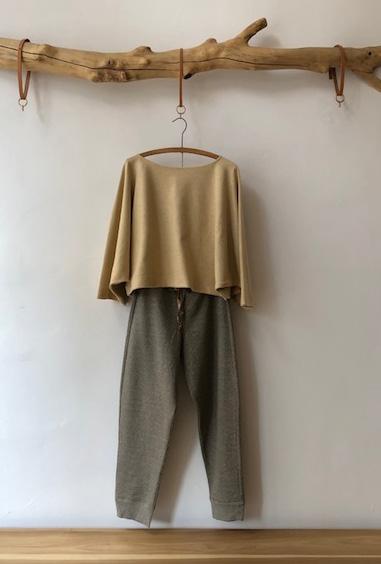
independent line of thoughtful, timeless clothing made with natural fiber textiles.
• KOSA Arts – rooted in the downtown Oakland storefront and gallery, Elaine Hamblin produces a curated line of impeccable clothing, including modern classics made with fabric comprised of Sally Fox’s Colorganic® cotton.
• McIntyre Ranch – surrounded by 900 acres of open space owned by the Solano Land Trust, McIntyre Ranch is a demonstration farm in Vallejo offering educational experiences with a Master Plan that envisions group retreats, youth activities, and food and fiber production.
• Millertown Sheep Farm – grazing in the Sierra foothills in Auburn, the Merino-crossed sheep raised by Elisa Noble and family are reducing fuel load and fire risk while providing tactile education for all ages through community events.
• Redwood Coast Mercantile – with a fiery passion for fiber arts, Lindsey Wondolleck uses artful felting to highlight the importance of supporting local sheep farmers and ranchers and create joyful miniatures alongside explorations of slow fashion.


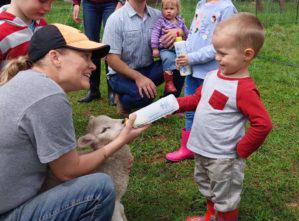
• West By Midwest – if you’ve read her book Raw Material: Working Wool in the West, then you know it’s hard to encapsulate Stephany Wilkes’ role in regional fiber systems: shearer, fleece classer, educator, researcher, and more.
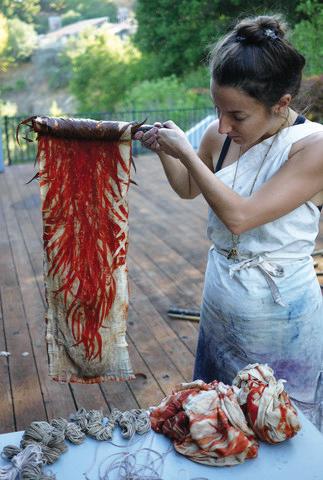
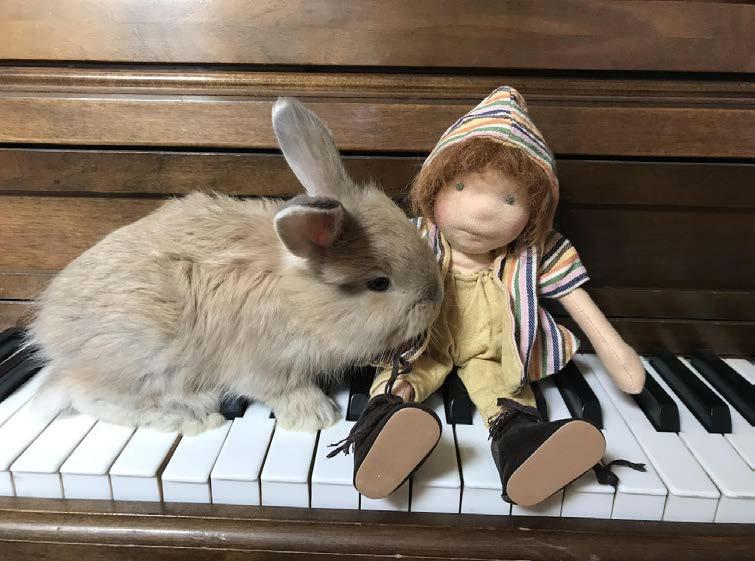
Our summer Fibershed producer Meet-up is June 1 at Full Belly Farm in the Capay Valley. We will hear from Rosie Busch, Veterinary Extension Specialist, on lambing and nutrition. We will have a limited number of one-on-one sessions with Gayle Ravenscroft of Pacific Knitting Retreats to discuss the specific characteristics of your yarn and better understand projects and opportunities that would be a good fit. There will also be an opportunity to tour Full Belly’s beautiful grounds for inspiration on crop-livestock integration. To RSVP and reserve your consult with Gayle, contact Molly@Fibershed.com.
Save the date for the 2020 Fibershed Wool & Fine Fiber Symposium, scheduled for Saturday, November 14, in Point Reyes Station. In July, a request to vend form will go out in our email updates. Please be on the lookout for this form if you wish to sell in the marketplace at the Symposium.
On the evening of June 11, Fibershed will host an educational event at the David Brower Center (DBC) in Berkeley. We envision a panel discussion and curated pop-up marketplace by the Northern California Fibershed Cooperative (Coop) to further an intellectual and tactile connection to the intersections of tending wild spaces and restoring working landscapes. Please keep an eye on our email updates as more information becomes available this spring. If you would like to participate in the marketplace, be sure to join the Coop (norcalfibershedcoop.com).
As the newest member of the Fibershed team, our Community Agricultural Director (CAD), I thought I’d take this opportunity to introduce myself. I’m Molly Oshun, a Sonoma County native, water resource engineer, community organizer, and a folk herbalist. I am particularly jazzed about heritage fiber arts, prescribed fire, managing for drought, mending as a revolutionary act, and finding you support to run forth with your boldest dreams. Truly, one of my passions is to serve as a matchmaker between brilliant folks doing the work, and those who seek to serve them (funders, technical assistance providers, educators, volunteers). Please shoot me a note any time with your schemes and needs, and I’ll start sniffing around for resources: molly@fibershed. com.
Since starting in August, I have had the deep privilege of visiting about 20% of our member community. It’s my favorite part of the job. Leaving each farm, ranch, or studio, my heart is fit to burst with the incredible goodness and hard work of this community. What generosity of spirit, thoughtfulness, skillfulness, steadiness, and abiding loyalty to your craft. It is tremendous, the work already taking place, and I feel honored to receive this invitation to be of service.
From these conversations and others with the Fibershed team, here are some of the top needs that I have heard so far. If you see something missing, I hope you will let me know.
• Financial support for the hard costs of land tending: fencing, water projects, seeds, compost
• Practical knowledge for land management: how to make better compost, develop a grazing plan, grow drought-resilient forage, lamb with ease
• Help selling your yarn: wool pools, marketing advice, brand partnerships
• Leadership in the political and consumer movements for grazing for soil health
• Connections and community within the fibershed: numerous producers said their favorite thing about being a Fibershed producer member is connecting to other members
These needs and more are being rolled into Fibershed staff’s work planning and priority setting. Check out the article on Program Updates, and please always feel free to reach out, especially if you’re game for a farm visit!
With deep gratitude, Molly Oshun
Molly@fibershed.com (415) 301-5444
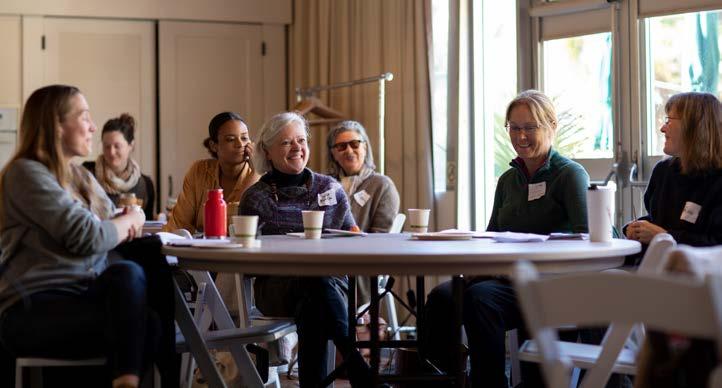

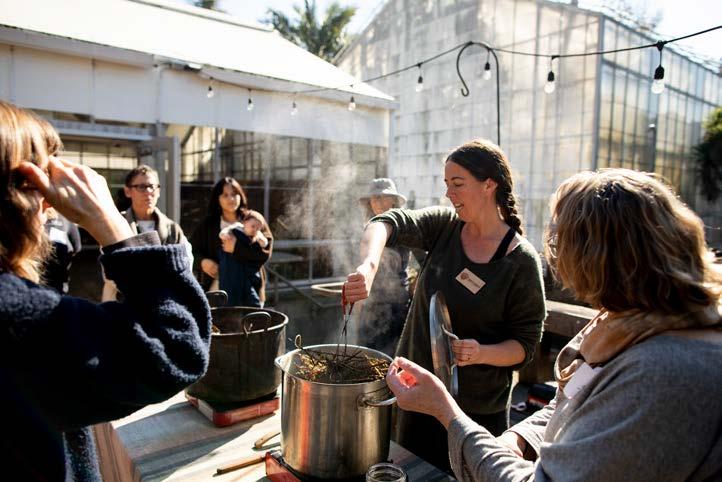
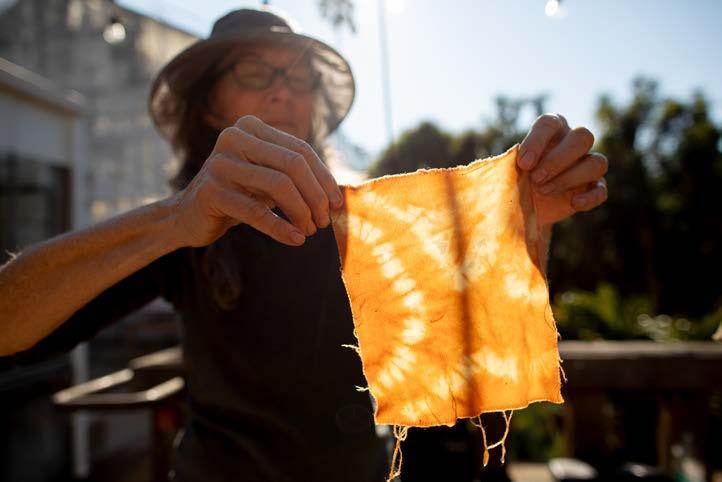
Are you wondering about other producers’ experiences with projects using funding support from California’s Healthy Soils Program? Two producers offer the following insights into how they have implemented projects and what they have learned.
Alexis and Gillies Robertson of Skyelark Ranch received an HSP grant in 2018 for projects on land they had recently purchased and moved onto in Siskiyou County. Their project includes silvopasture (5.5 acres), cover crop (7 acres), windbreak (.43 acres) and riparian forest buffer (1.4 acres) with native trees and shrubs (cedar, ponderosa pine, white oak, alder, black cottonwood big sagebrush, wild rose, and quail bush). In 2018 they planted a rye cover crop; in 2019, the cover crop was an irrigated grazing pasture mix with clovers, grazing alfalfa, and fescue.
Peggy Agnew of Red Creek Farm in Mendocino County received an HSP grant in 2019 for compost application to irrigated pasture (3.5 acres) and non-irrigated rangeland (4 acres).
What help have you needed to implement your Healthy Soils Program grant project, and who provided that help to you?
AR (Alexis Robertson): We did most of the work ourselves. Gillies has worked for several RCDs [Resource Conservation Districts]and had the experience to implement the project. We consulted our local seed company about timing for planting the cover crop and variety selection. We consulted the nursery for local plant varieties that would work for our site. Our tractor broke this winter, so we hired our neighbor to mow the cover crop for us this year.
PA (Peggy Agnew): I received help from Britta Baskerville, Community Education Specialist, Ukiah, UCCE [University of California Cooperative Extension], with the language and inserting the various bits of information that required computer skills beyond my knowledge. I also received help from my daughter, Alison Whipple, Ph.D., who digitized a map of our farm and helped with the scientific writing, and Heather Podoll, Policy Coordinator, Fibershed, who added important points and support. Once the grant was submitted, I first thought to share time and equipment for the application of the compost with some neighborhood friends who were also applying for the same grant. However, after talking with my immediate neighbor, who has been
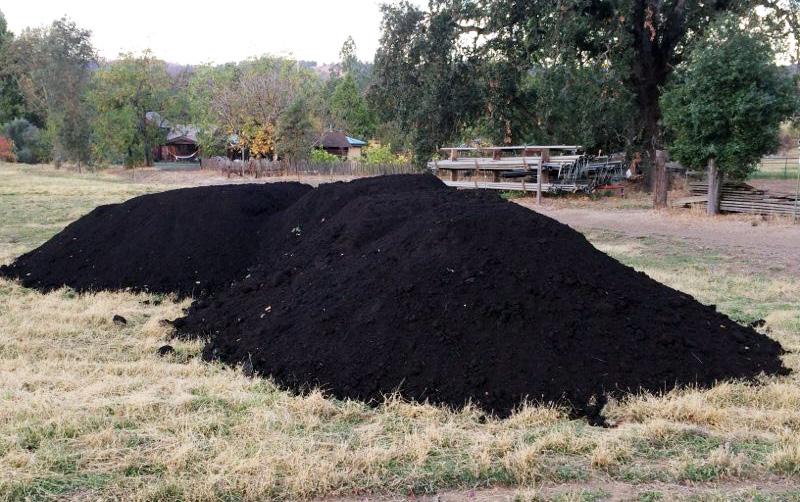
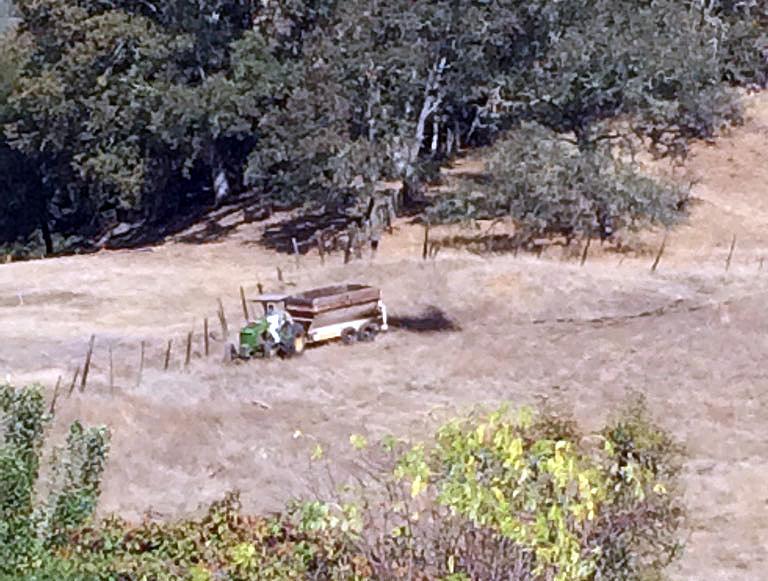

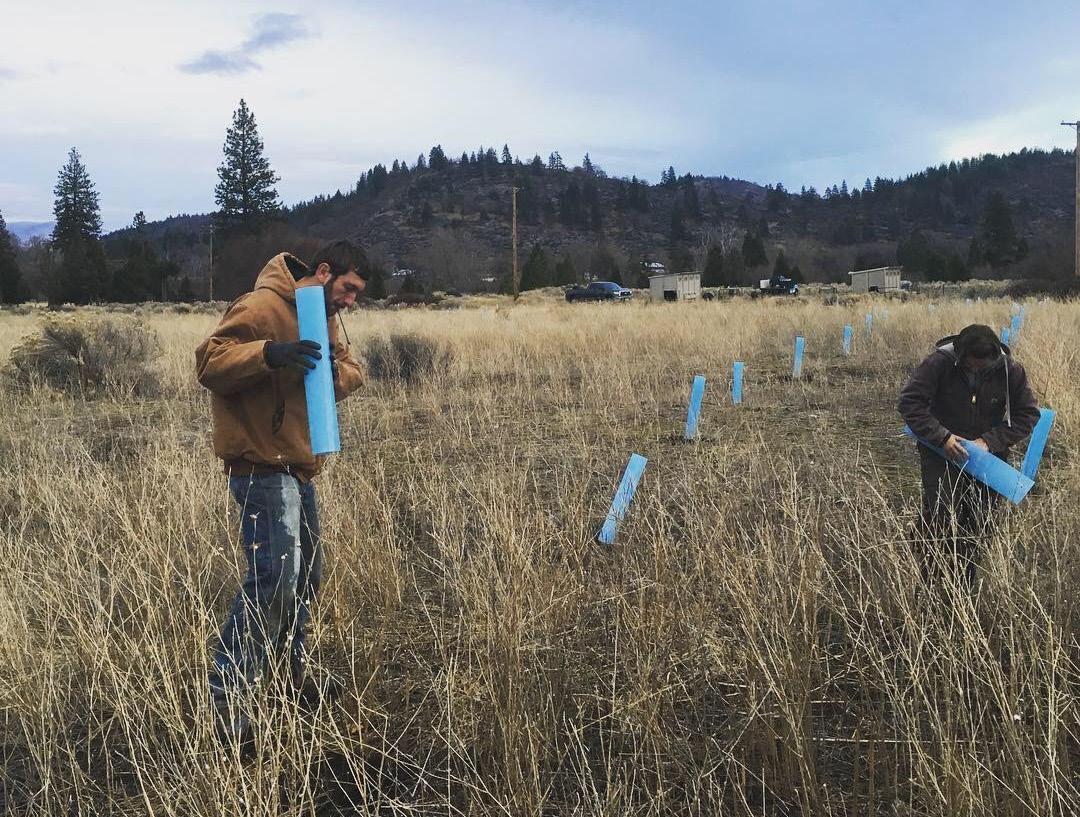
applying compost to his vineyard for years, I decided to hire him as he had the more appropriate equipment: a compost spreader, a tractor big enough to pull the compost spreader, a large loader and an experienced tractor driver. Once we received the grant in June, I checked with Cold Creek Compost to make sure they would have the right amount of compost for us in October. We would try to apply it right before the winter rains started. Then we had to find the best spot on our farm where we could dump the compost and distribute it from.
What went well in installing or implementing your project, and what were some of the challenges of the project?
AR: We had a work party to get the initial planting done, and that was really helpful. We didn’t get the irrigation going early enough, so we had to replace more plants than we would have liked in year two.
PA: All in all, I feel like the project went very smoothly. I had great help with writing the grant; my neighbor had all the right equipment and labor, and Cold Creek Compost is only a few miles away from us. The only surprise was that once I ordered the compost, it took about two weeks for it to be delivered, which was longer than I anticipated. I had not asked about the lead time for delivery. And our driveway is just barely big enough for a truck and trailer to come down.
What have you learned from your work and observations so far with this project?
AR: We have learned about our soils through the soil sampling, which we may not have known. It is interesting to see which plant species are doing the best. This is all new to us because we have only lived here for two years.
PA: I have learned that 8 tons/acre of compost may sound like a lot on paper, but once on the ground, it does not look like a lot. I have also learned that there are many people out there able and willing to help with this process. I am finding other neighbors interested in applying this year for the HSP composting grant, which is exciting.
Have you begun to see any benefits yet from the project, or when do you expect to see the benefits you are hoping for?
AR: Growing the trees and shrubs is really rewarding - we are looking forward to the practices providing shade and a windbreak in five years. The cover crop will be grazed this summer, which will reduce the feed we need to purchase.
PA: I have not seen visible differences yet from the project, but I expect to see more once the pastures begin to grow with the warmer and hopefully wet spring weather. We will be haying one pasture, and
I expect the bale count to be higher. In the fall we will do more soil samples which should tell us something.
Is there anything else you’d like to share about what this project has meant to your operation?
AR: This is work that we would have liked to do anyway. However, we wouldn’t have been able to afford it. This has moved up our timeline to make our property more useful for livestock by providing shade, shelter, and extra feed much sooner than we would have been able to otherwise. It is also providing all of the other environmental benefits that we care about, including carbon cycling, species diversity, wildlife habitat, and increasing water holding capacity.
PA: This is something that I have wanted to do for many years, but having Fibershed make me aware of the HSP program that covers a lot of the cost, and discovering the available help has made this project a reality. I appreciate having a more thorough knowledge of the benefits of compost and how it helps with carbon sequestering. It is empowering to be a producer of Climate Beneficial ™ Transitional fiber, and I will work to implement more regenerative practices on the farm in the future. I am now able to educate the consumers of my fiber as to the importance of supporting Climate Beneficial farms. We are not a very large farm, but if many of us, large and small, can work together to take advantage of these grants, the benefits will be great.
California’s 2020 Healthy Soils Program (HSP) Incentives grants will offer a streamlined application, expanded eligibility and rolling submission process.
California Department of Food and Agriculture (CDFA) will accept applications beginning in late February for the 2020 round of HSP funding. $28 million is available to support new practices that build healthy soils and promote carbon sequestration on farms and ranches. Fibershed producers may want to consider applying if the following practices are of interest: compost application to grazed grasslands; compost application to cropland; cover crops; alley cropping; silvopasture; prescribed grazing; hedgerows, windbreaks, riparian planting or restoration; range planting; no till/minimum till; mulching.
Changes to the program this year should improve access to these funds by more farmers and ranchers:
• The application is streamlined, with fewer essay questions and attachments.
• Producers who have already received HSP funding are eligible to re-apply to expand a practice to a different field within the same (previously funded) Assessor Parcel Number (APN), as long as the practice is new to that field.
• Longer application window, up to 4 months, with rolling applications funded first come first served as long as basic requirements are met Application guidelines will be posted on the HSP Incentives Program website: www.cdfa.ca.gov/oefi/healthysoils/IncentivesProgram.html
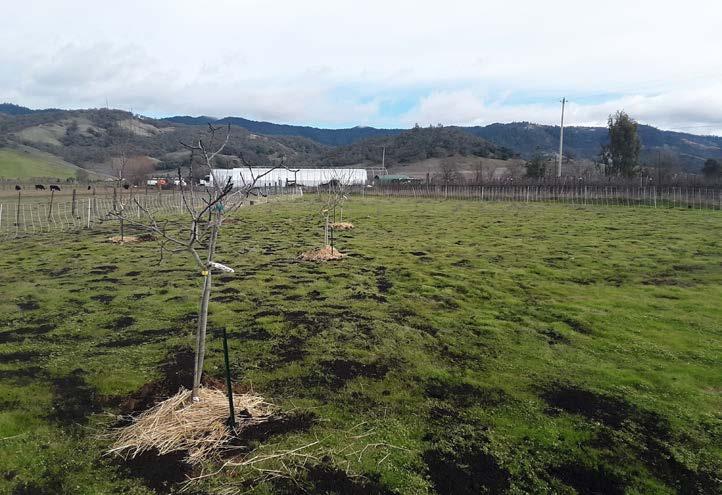
Technical Assistance is available to help with project planning, application preparation, and implementation support. A number of RCDs, UC Cooperative Extension offices, and nonprofits throughout California have received dedicated funding to support producers with HSP projects. A list of TA providers awarded funding from CDFA for HSP support can be found here: www.cdfa.ca.gov/oefi/technical/ docs/2019_CSA_TA_ProjectsSelectedforAward.pdf
Fibershed will send out a notice to producers when the application window for HSP opens. Reach out to Heather at Fibershed (heather@ fibershed.com) if you have questions about finding a Technical Assistance provider in your area or with any other questions about the Healthy Soils Program.
Assmall business entrepreneurs dependent on seasonal systems, in winter many settle into the quiet to work ON our businesses instead of IN them. Over the last two years, Fibershed has supported an extensive project to develop a business curriculum (www.fibershed. com/business-curriculum) for its Producer Program members, a full suite of financial, strategic, and marketing training customized for businesses within the fiber economy. We have executed 24 courses. Most are webinars and a few in-person seminars. One could consider this similar to a miniature business certificate course, far more extensive than much of the training provided at your local SBDC or community college, and far more specialized in its content, crafted specifically for our Northern California fiber and sheep businesses despite their wide diversity. The courses coupled with the offer of individualized one-on-one technical assistance is an unparalleled investment in the direct improvement of your entrepreneurial endeavors, a loud vote of confidence that small business is a vital cog in the struggle to uplift and laud the local fiber supply chain, its beginning sources, end products, and middle stewardship providers!
Fibershed is committed to provide our business operators with meaningful education and support…FOR FREE! Courses far less broad AND deep in their scope are offered for sums in the thousands by educational institutions or trade organizations, yet without the opportunity to interact one-on-one with an instructor.
The Fibershed Business Curriculum (www.fibershed.com/businesscurriculum) is archived entirely online accompanied by practical tools and templates alongside the webinars, all included in the scant cost of your annual Producer Program membership. Don’t let the opportunity to take advantage of this free resource escape you and your business in this rainy, reflective season.
If you completed some of the courses, we value your opinion on this experience: please participate in our Business Curriculum evaluation survey. All those who complete the survey will have a chance to win ONE FREE ENTRANCE to the Fibershed Gala event in 2021. All the more reason to have your voice heard!
you been meaning to make use of Fibershed’s business curriculum, but waiting for the slow(er) season? Then, this is for you.
Fibershed will host three study groups for producers looking to brush up on their business savvy this rainy season. Running February 24 to March 30, producers can select one of three tracks for a low-stakes, highreward peer learning opportunity.
1. Choose a track and register with Molly@Fibershed.com by March 15.
2. Receive an orientation email from Olivia Tincani recommending two to three recorded webinars on your chosen track.
3. Watch two or more webinars any time before March 30.
4. Bring your questions to a 90-minute call, Ask Me Anything, with Olivia in early April with other Fibershed producers in your track.
5. Within each track, two Symposium tickets will be raffled off to participants!
1. Cultivating success: Visioning and strategic planning
2. New year, clean books: Financial Basics for Fiber Economy
3. Moving product: Marketing and Sales
If you have any questions, please contact Molly Oshun at Molly@Fibershed.com
Fibershed finds inspiration in our multi-generational community of fiber farmers, dyers, and artisans. In this newsletter, we are featuring two young fiber farmers who help run their family’s operation.
Is there a young person in your life to feature in our next newsletter? Email Molly Oshun at Molly@Fibershed.com to share their story.

Imogen of Wild Oat Hollow (above) has been a budding shepherdess from the age of 4. She is now a skilled lamb caretaker, fence mover, and sheep ranger six years later. Her skills improve and build each year, so does her passion for the sheep and the land that we manage. Imogen hopes to be an environmental scientist and shepherdess when she
BY MARCAIL McWILLIAMS
Wow, January 2020!!! I’ve been looking forward to the year 2020 for quite a long time. Those two numbers together just seemed so cool, and now it’s here! Looking into this year, I see a couple of wool shows that I’ll attend: Black Sheep Gathering and Lambtown. Those are two great shows. If you’ve never been, I will encourage you to attend! Lots of vendors, opportunities to buy some great fleece from real people who care about their animals, and some pretty cool workshops to learn fun new skills!
I celebrated two years of business this past November. I can’t believe it’s only been two years! Feels like a lot longer! I have some improvements in the works for the mill: one will be a contraption to help automate the process of making batting, and the other is an improved scouring setup. I will be able to recycle the water, using it twice before draining it out, and the demo setup has allowed me to wash more wool at one time while possibly using less product than my current setup.
Other improvements have been purchasing some special compostable bags to hold completed orders. I’m feeling good about finding those and not buying plastic! Woo! Also, I installed better lighting in the mill! My goodness, what I installed a couple of years ago was a huge step up from the dungeon I started with, but what I have now makes me determined to get even more lights in there and get rid of all these dim lights! Especially during the darkest time of year, it can be a struggle to stay motivated when there’s poor lighting. Not going to lie, December was a hard month for me to get through, biggest bout of S.A.D. ever, but I made it, and I’m doing much better now!
I had a couple of neat speaking opportunities in the fall. One was presenting to a fashion design class at Sacramento City College on the process of starting my business. That was pretty neat to have a chance to inspire other young people and answer their questions on what the process is like. I also spoke at the Fibershed Symposium! That was neat to be included, and if you didn’t have the chance to attend, you can find the recordings on their 2019 Symposium website (fibershed.com/programs/education/symposia-presentations/2019wool-symposium).
What’s Next: Right now, I’m just trying to keep up with orders. Firstquarter is always the hardest because I’m fighting cold rainy weather and cranky machines, not to mention being cranky myself. I’ll be switching to batting soon, so if you have orders for batting, I will need to receive them very soon; otherwise, I’ll get to them next time I do batting.
grows up. Combining her passions to heal the land and mitigate climate change. What a powerful force she is, and we look forward to seeing what she does with her fiber animals as she grows.

Evie of Owl Oak Acres and Lambykins (above), her very first 4H project sheep, a Mini-Cheviot. Evelyn (Evie) Frucci comes from a fiber family. Her mother, Dawn Graham, grew up with sheep helping her grandmother, Jane Granger, process raw wool. Her grandmother, a hand spinner of 50 years, encouraged Evie to raise a wool breed for her first 4H sheep project, so Evie chose Lambykins, pictured, a Mini-Cheviot. It’s now four years later, and Evie has ten head of registered Delaine Merinos, Lambykins, and 14 head of registered Fullblood Dorpers. She is involved in every aspect of raising her sheep, and her fleeces have won Best of Show, 1st, 2nd, and 3rd place ribbons at Black Sheep Gathering, Lambtown Festival, and Tehama County Fair.

This fourth volume of the Fibershed Producer Newsletter is designed to be a space to re-acquaint and connect, as well as refresh ourselves on the who and what of our projects and collective efforts.
We look forward to hearing from you about what kinds of information sharing, column ideas, poems, art, doodles, updates on your family and business, and notes from the field that you’d like to offer for the next publication. Newsletters will come out twice yearly to start, and our next edition will be sent in August, 2020.
Ongoing Public Notices: Do you have an internship, a residency, an ongoing course or service that you offer? We will again include a Producer Classified Section in our next newsletter.
Classified ads, as well as your thoughts and visions, should be emailed to marisol@fibershed.com. Feel free to submit both your ideas and your classified ads between now and July 22, 2020.
BY ERIN WALKENSHAW
On Dec. 5th of 2019, a group of hearty folks gathered in the light drizzle and chill of early winter at Tablas Creek Vineyard outside of Paso Robles for an event called “Ovines in the Vines.”
Designed as an informative and interactive opportunity to learn about integrating sheep into vineyard systems, the day brought together a dynamic group of participants with the 60 or so attendees coming from a wide range of backgrounds and having varying levels of experience in livestock and vineyard management. The event, organized by Grazing School of the West in collaboration with Tablas Creek Vineyard and Fibershed, consisted of indoor presentation and in-field (or ‘invineyard’ as was more the case here) activities.
Described as “an intensive field day for vineyard managers to introduce the use of grazing sheep as an ecological approach to managing vegetation in the season between harvest and budbreak, as well as an introduction for grazing beyond budbreak,” the day’s program did not fail to deliver. Presenters included Kelly Mulville from Paicines Ranch, Nathan Stuart from Tablas Creek Vineyard, Robert Irwin from Kaos Sheep Outfit, and Brittany Cole Bush from Grazing School of the West. Several highly experienced audience members also lent their insights
to the conversation. To the credit of the presenters and organizers, it seemed that early on in the day, they realized how much knowledge was in the room, and tweaked their plans to proceed in an engaging ‘groupthink’ discussion format that encouraged the group’s collective wisdom to come forward. The conversations were honest, multifaceted, and grounded in the truth of direct experience. Questions were answered more with nuanced descriptions of working within complex systems rather than formulaic recipes.
We all shared a delicious meal of roasted lamb paired with Tablas Creek Vineyard wines, which allowed the conversations to deepen and continue in the convivial setting of breaking bread together. Common themes heard around the tables were focused on the building interest in incorporating sheep into vineyards and other crop systems; and relatedly, how much demand is growing for livestock managers that have the skills to work within vineyard systems. People repeatedly expressed a desire for more information and more events like “Ovines in the Vines” to learn with each other about these exciting ICLS opportunities.
For more information about Integrated Crop and Livestock Systems, particularly regarding sheep integration in vineyards, please visit Fibershed’s webpage on this research at www.fibershed.com/programs/ fiber-systems-research/integrated-crop-livestock-systems-and-fuelload-reduction/
Photo by Erin Walkenshaw

BY AMY SKEZAS
Amy Skezas hosted some climate refugees during the Kincade Fire Evacuations last year. Here are some of her reflections about lessons learned that might be useful for preparation in your community.
We can translate our fire/emergency experiences, and our fears, into better care plans—for our families, flocks, and Fibershed. How can we be more relaxed, curious, alert, and responsive? What do we need to get there? Think supplies, emotions, community.
How about stocking yummy pantry foods—dry goods like nuts, nut butter, dried fruit, canned salmon, etc.—along with a few cases of bottled water? Rotate stock, so there is always an easy, fresh supply. We invested twenty years ago in a 5000-gallon tank, for fire safety, and also as an emergency source if our water supply is cut. Do you have space for a tank of any size, and if so, where?
I keep several boxes of N95 masks on hand at all times. I buy at Friedmans, off-fire season, and online at any time. They also are useful for handling hay and straw (mold, dust exposure), and if they’re here, I’m more likely to use them.
Having some lights, an oil-filled radiator, a fridge and freezer, and electric countertop cooking appliances help my family feel fine even when the main power is out. My husband calls it “Camp Crockpot!” In 2019, we purchased a gasoline generator along with multiple gas cans— almost impossible to find during fires! You can start planning now with an overview of features, ratings, etc. at www.consumerreports.org/ cro/generators.htm (Gas goes bad if it sits a long time, so now we have rotating gas stock as part of our lifestyle.)
We have a simple evacuation plan. During the 2017 Tubbs fire, we spent several days on pins and needles, hosing down the house; it became clear that most of our stuff is not essential. Our vitals are a “go bag” of meds and our computer hard drives; animal food and bowls; some water; and warm jackets and sleeping gear. What are yours?
We invested in a roof rack and a Thule pod to put on top of our vehicle for storage in an evacuation; we just bought a used animal trailer; and, we have a pickup truck now. This has taken us a few years to get together, but, step-by-step, we got there. If the whole region is going down, I have camping gear and portable fencing, and hopefully can drive out.
I do behavioral conditioning every day with our flock. They love rewards; they really pay attention! This training builds a relational base of consistent expectations: reachingtheanimalmind.com and helps us move easily from one place to another, and respond better to one another in daily life as well as in emergencies.
During fire times, I keep the flock in from pasture, in the night pen, where I can load them up quickly. I check in often with the Facebook groups NorCal Livestock Evacuation and Sonoma County Fire: Community Response.
I am part of Tender Shepherds, and we’ve evolved into a little fire refuge guild. With whom in your circle of acquaintances would you like to build a guild? What resources can you bring to one another in partnership?
Finally, but most importantly, I need to regularly, consciously practice bringing positive body/mind responses to life’s challenges. I like guided meditations, especially www.healthjourneys.com/audio-library/stressrelief/meditations-relieve-stress.
I hope you find some useful information here to get you thinking about your resourcefulness. Happy planning!
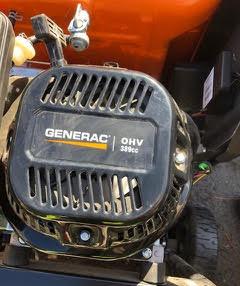
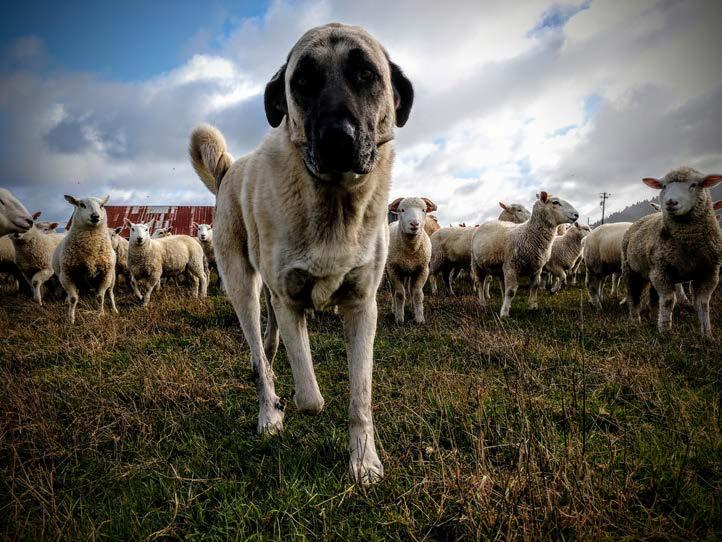
BY JILL HACKETT, FERNDALE FARMS
Instagram @humboldtherder
We have been using livestock guardian dogs (LGDs) for some time now. Our family runs sheep and cattle on a remote property that is surrounded by timber company lands. We have had many different breeds, including purebreds, and lots of different mixes. Some have been good, some bad, and some ugly. We have raised puppies, as well as taken on a few older problem dogs, that have had issues with containment. We don’t have a breed preference, although short-coated dogs are easier to maintain and have fewer problems with foxtail and stickers. Dogs from good working parents offer the best success. Experience has taught us a few things to consider when choosing an LGD. If you have a small property, pick a dog that is quiet, calm, and well, quite frankly, lazy. Trust the breeder to know their pups and help you select one that suits your situation. Active dogs will get bored, and you may have a hard time keeping them in. They could also develop bad habits such as chasing stock, fence chasing, excessive barking, or challenging cars or passersby. If you have close neighbors, other issues may arise from excessive barking, escaping, and dog fights.
Active dogs are better suited for us because our land is steep, rough, brushy, and we have a heavy predator load. Currently, we run a crew of 6 dogs. Some are chasers that will pursue predators out of the pastures. Chasers tend to tree bears and work the perimeter. We have another type that always seems to stay with the flock. These dogs always know if sheep get left behind, and at least one of them will stay with that group until they rejoin the main flock. They tend to spread out and work in pairs to minimize predator problems. We prefer to raise two pups at once. For us, raising two pups together results in more dogs in the same amount of training time. Additionally, the pups tend to focus play on each other rather than directing it at their training stock.
Our best dog so far is Tater. She came from a small farm in the Willamette Valley and was two years old. She was raised right with another female from the same litter. Tater was an extremely active dog and left the property often. Her littermate was content to stay in the pasture. Two very different dogs. She was always on the move and knew exactly where all the threats were 24/7. She was considered a problem dog on a smaller property, but here she has excelled.
Some dogs did not end up working out for us. Reasons include too many Alpha dogs leading to fights; aggressive behavior towards their stock such as chasing, wool pulling, and actual maiming or killing; not bonded to their stock; injuries from poor conformation, especially post hind legs.
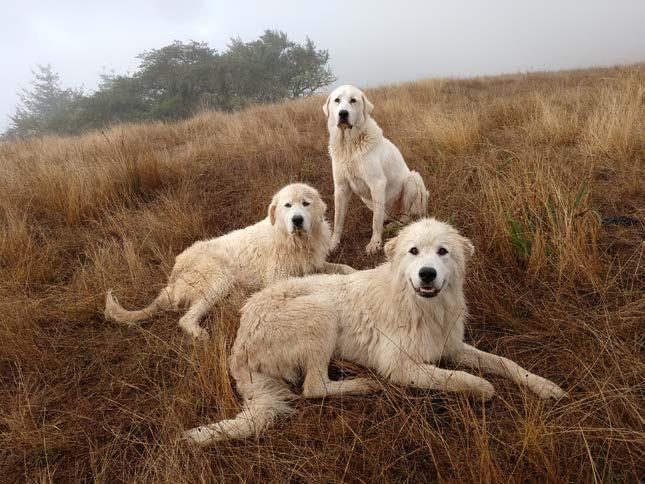
When considering an older dog, we have a list of questions we like to ask, tailored to our particular needs:
• Is the dog Alpha (dominant, aggressive, or a leader)?
• Is the dog aggressive around food? Feeding time can turn into dog fights when running multiple dogs.
• Can you catch the dog? Is it leash trained? Has it traveled in a stock trailer?
• Is the dog’s behavior appropriate around stock? To us, this means submissive behavior around stock, no chasing, or mouthing.
• What type of stock has the dog guarded? This one isn’t a deal-breaker for us.
• Is the dog bonded to its livestock?
• Does it roam? If so, does it always return to its stock?
• Spayed/Neutered?
• Is the dog current on vaccinations?
• Any hip problems?
• Post legs or straight back legs? This has been a problem for us. It can cause multiple mobility problems.
There are a few good books on this subject:
Livestock Protection Dogs: Selection, Care, and Training, Orysia Dawydiak & David Sims
Livestock Guardians, Using Dogs Donkeys & Llamas to Protect Your Herd, Janet Vorwald Dohner
Brave and Loyal, An Illustrated Celebration of Livestock Guardian Dogs, Cat Urbigkit
There is an excellent blog post by Louise Liebenberg, Grazerie: predator-friendly-ranching.blogspot.com

BY REBECCA BURGESS
TheHuston Textile Mill has been weaving our region’s fibers since its 2017 opening at the Mather Air Field in Rancho Cordova. During this phase of operation, the project has produced the first first textiles with Climate Beneficial™ Wool, grown from California’s rangelands, and woven in California’s first mechanical weaving facility to establish itself since the latter part of the 19th century. The mill has also produced organic plant-based indigo-dyed denim and a range of organic cotton Chambray in 21 sample color-ways.
Due to the exemplary mechanical abilities of Ryan Huston and the leadership of Kat Huston, the mill was able to produce these textiles even with the challenges brought forward by aging, albeit charming, equipment.
The mill’s potential remains strong to produce endemic textiles that put our regionally grown natural fibers to functional use. The good news is that the mill will have an opportunity to expand its potential as a value-addition center for our region’s fiber through the mill’s first nonprogram related investment.
A new social impact investment in the Huston Textile Mill was made in November of 2019. The family office that invested is currently evaluating the structure of the business and is developing a modernization strategy that will support the mill to increase its functionality while becoming increasingly price competitive.
The investment is designed to enhance the work that has already gone into the mill’s foundational elements— including optimizing space at the current location, supporting the mill’s mechanically inclined talent with additional labor, and expanding the R&D fabrics that have proven so popular within the local design community. Thankfully, the work to expand opportunities for the value-addition of our region’s fibers will grow in the coming months and years.
BY HELEN KRAYENHOFF
Helen Krayenhoff sells natural dye plants at Temescal Farmers’ Market in Oakland during the spring season at Kassenhoff Growers’ booth. She also sells dried dye material and seeds on the Northern California Fibershed Cooperative Marketplace under Plants•Color•Place (fibershedmarketplace.com)
Many Fibershed members are accomplished growers. If you aren’t yet, there are lots of good reasons to grow dye plants and growing them from seed may be the most satisfying. I get great pleasure in experiencing the process full circle of planting seeds, transplanting the seedlings out into the garden, caring for the plants, harvesting, drying, or using the fresh plant material to dye with. And then saving seeds from the spent plants in fall is an act of hope for the next year. I spend some quiet time with the plants almost every day and notice and connect with the insects and small animals that live in and around them.
Here are a few things I’ve learned along the way: If there are insects, birds and critters that dig up or chew on seeds before they sprout, I grow the plants into very established seedlings on a table before planting them out. Snails and slugs can’t eat tough stems, and a larger plant can withstand some loss of foliage.
Early planting of seeds inside can extend the harvest. Those plants will flower earlier than direct-sown outdoor seeds. Some years I’ve planted a second crop for planting out in June if I have more bed space available. I find planting six plants of a new variety gives me a nice amount to experiment with.
I add some balanced organic fertilizer when I transplant into the ground. After the first flush of blooms start to wane, I feed again and water frequently. The more I pamper the plants, the more they give back. In my annual beds, I plant a cover crop in the winter to replenish the soil.
Pick the flowers every 2 to 3 days for the largest and longest harvest. I try to pick after the bees have gone home in the evening and leave the flowers that will fully open the next day for them. I’ve found some small native bees snuggled asleep in the cosmos flowers early in the morning.
Growing my dye plants is part of the alchemy that connects my fiber practice in an even more visceral way to the piece of land where I live. I encourage you to give it a go, whether you add some to your farm or grow them in between your veggies or even in pots on your patio.

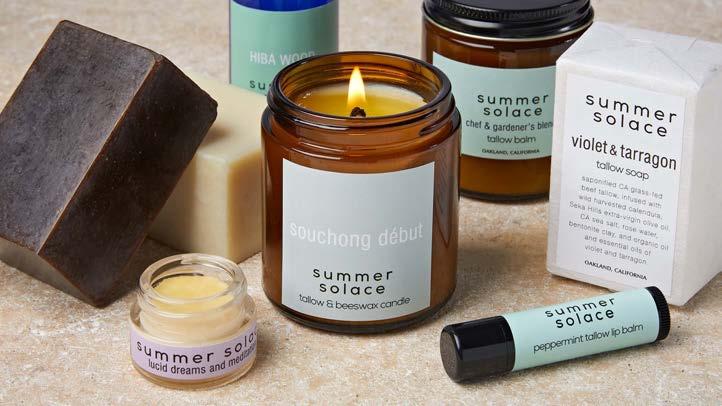
Ethical. Traditional. Profound. Skinfood for a Sustainable Future. #slowbodycaremovement™
Summer Solace Tallow is an artisan line of ethical and sustainable organic tallow balms, soaps, and candles handcrafted in Oakland, California with local ingredients from Northern California.
We are actively reviving the nourishing traditions of using local grass-fed and pasture-raised animal fat to moisturize effectively and soothe skin irritations. Our tallow-based products contain unique and harmonious blends of high-quality, organic essential oils, local extravirgin olive oil and local tallow from family farms, which we render and combine in small batches.
Indulge in a Slow Body Care Movement™ with Summer Solace’s local grass-fed tallow balms!
summersolacetallow.com @summersolacetallow
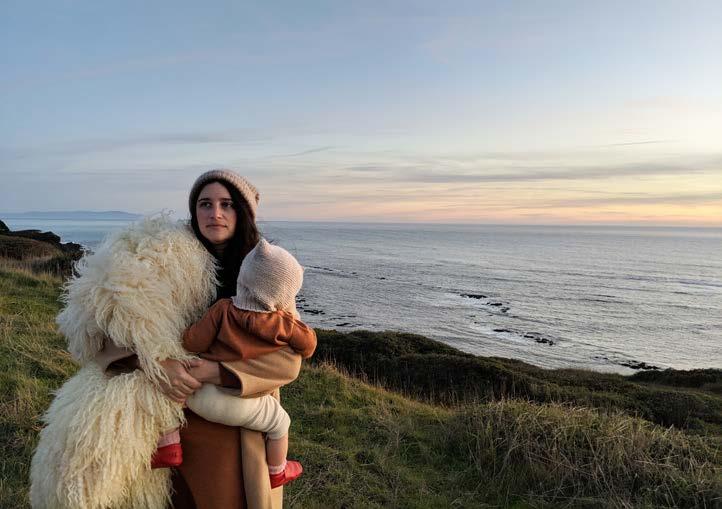
Shepherdess Holistic Hides is looking to collaborate with Fibershed producer members to source sheep hides for our Spring/Summer collection. In efforts to support conscious consumerism and education, we are working to expand our offerings of beautiful sheep hides traceable to source from farms, ranches and grazing operations that share similar values in animal husbandry and land stewardship. We are open to discussing various ways of collaboration from purchasing your already finished tanned hides or salted hides ready for tanning. Our goal is to carry the story of source, of where the hides come from and the mindful practices that producers like you who raise their sheep be it for fiber, food, or prescribed grazing projects. We would love to offer your hides in our collection to share your stories in new marketplaces near and far. Please contact us at HIDES@SHEPHERDESS.CO if you’d like to discuss possibilities. Happy Spring!
New location in Downtown Monterey for slowfiber. Looking to carry wool from the Fibershed wool producers for garment based knitting etc. As well I need roving in natural white, natural morrit, grey, and natural black. My budget is small—but this in an important addition to my shop.
I am a sewing and fiber arts learning center with resale, consignment and new (only local) tools and supplies.
I also have 4 acres of land on the North-facing gentle slope of a small valley in Monterey County between Monterey and Salinas for someone interested in growing dye plants and/or a small flock of either goats or sheep or ?
Please contact me at (831) 915 5388 or slowfiber@gmail.com.
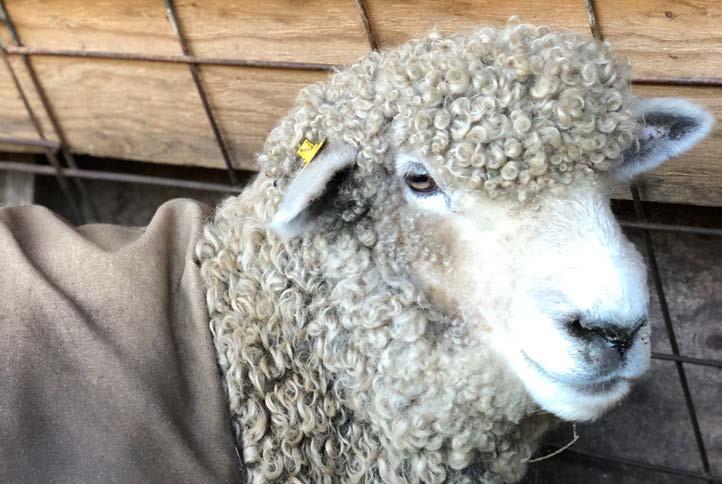
Purebred Romneys (white and recessive-colored) and black and white purebred Corriedales, as well as Romney/E. Friesian and Corriedale/E. Friesian crosses. Fleeces, lambskins and breeding stock for sale.
See our website: www.barinagaranch.com or email me: marcia@barinagaranch.com


Purebred polled Icelendics, extremely gentle flock, easy to manage, all colors, big, healthy ewes, bred to lamb March-April. Need to down-size my flock. Please contact me at 530 640-1138 or nwgba@citlink.net

Would you like to set up a tour for your knitting/spinning/weaving group, or fiber fanatic friends? Groups of 10 adults are preferred, minimum of 5 adults, cost is $10/person. Send me an email at valleyoakwoolmill@gmail.com to discuss setting up a tour.
Fresh or lightly composted alpaca manure is mild enough to top dress your plants, but nutritious enough to enrich your soil. Bring your truck, we’ll load it for you. By the pickup load (4-5 ¼ yard buckets) or trailer load - $10 per load/yard.
For Weddings, Special Events, Photo Shoots. Make your occasion special and fun! Call or e-mail for pricing.
Alpaca fleece, roving and yarn for your next project. Natural colors: white, light fawn, brown, silver grey, rose grey and black. Visit our farm store for best selection. Appointments required.
Menagerie Hill Ranch, Vacaville, CA Deb 707.290.7915 deb@menageriehillranch.com
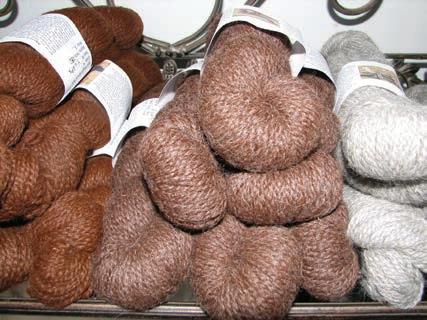
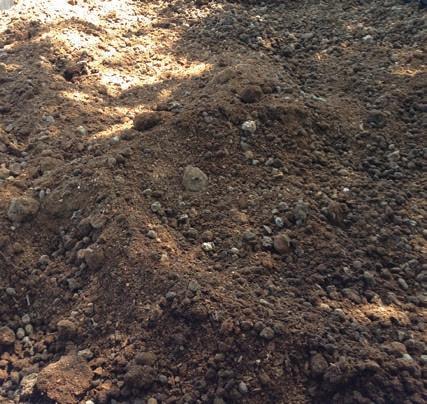
Are you a current or transitioning Climate Beneficial™ farm or ranch looking to diversify your land and complement your Carbon Farm Plan? Are you a school or community garden interested in adding Japanese indigo into your planting season? Are you an individual looking to take your indigo journey to the next level?
Seed germination trials from my 2018 and 2019 Japanese indigo crops were successful. I am now cleaning seed in preparation for spring propagation and seed sales through the Fibershed Marketplace.
Headstart Nursery located in Gilroy, California has provided seed propagation services with Organic Certification for the Northern California Fibershed indigo growers over the last five years. I have placed the first of two indigo seed propagation orders through Headstart Nursery for 2020 with seedling delivery dates expected in late March and a second delivery in mid April.
Fiber Circle Studio located in Cotati, California has been home to many community indigo vats made from our locally grown indigo over the last
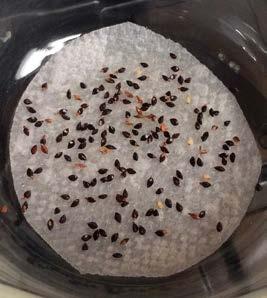
Indigo seedlings will be limited, so plan your order now!
CraigsIndigo @gmail.com
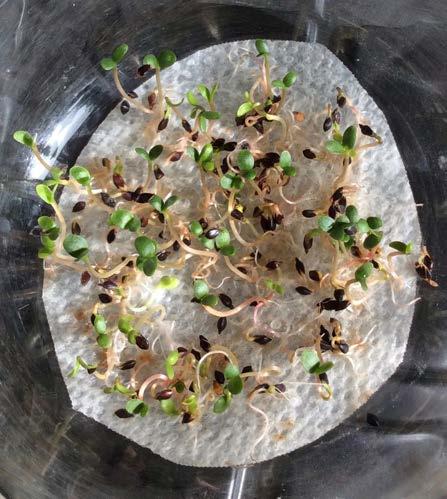

Learn artisan fiber production skills from the soil up. In exchange for your labor and enthusiasm, come to Rhoby’s Ranch for a week or two and learn about soil regeneration, sheep, planned grazing, Holistic Management, how to process wool, spin yarn, knit, dye, or other fiber arts. We could use your help with such things as gardening, land maintenance, farm projects, animal care and household chores, or an exchange of your professional or technical skills. We’re located in the beautiful Hoopa Valley about 1.5 hours east of Eureka. Flexible on time and season. If this sounds interesting to you, please get contact me at rhobyranch@gmail.com or rhobysranch.com.
Icelandic purebred breeding stock, Icelandic/Finn crossbred lambs, Icelandic handspinning fleeces, roving, yarn, pelts currently available. Coming soon—Finn handspinning fleeces and purebred Finn lambs. Sunnyside Farm is located in Lassen County, northeastern California. For more information contact Susan at chappell@frontiernet.net or call (530)253-3487.
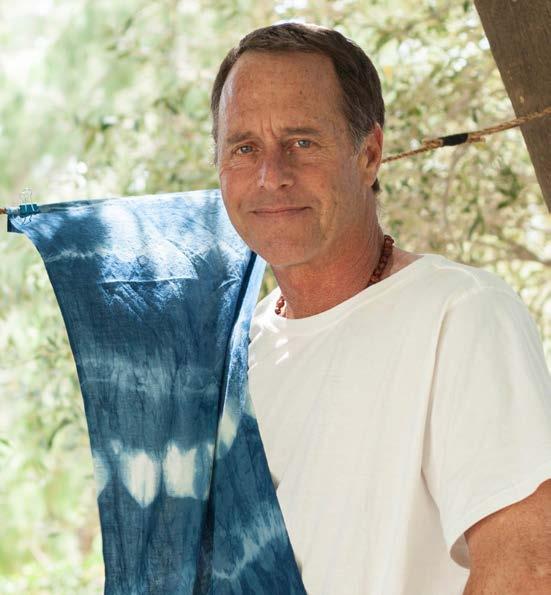
two years. Alisha Reyes, founder of Fiber Circle Studio, and I are happy to continue the tradition by offering our first community indigo vats of 2020 in March.
Santa Rosa Junior College Shone Farm located in Forestville, California has been home to my primary indigo crop over the last two years while enrolled in the Agricultural Internship Program. I have been offered the opportunity to continue this internship for a third year and recently enrolled for the 2020 Spring semester. I plan to expand the scope of the internship to include trial plantings of flax, cotton and Black Hopi sunflowers. I will continue collaborating with the SRJC Fashion Studies Department to assist in developing the natural fiber and dye curriculum component and annual fashion show event.
Learn more about opportunities to become involved with our 2020 indigo season by contacting me at CraigsIndigo@gmail.com

Join our Locally Grown Community Indigo Vat that has been put together collaboratively by Craig Wilkinson and Alisha Reyes of Fiber Circle Studio. Each person gets a one-on-one experience with the vat, getting an opportunity to dye some fabric, clothing, yarn or fiber. Please visit the website for all the details about what to expect, what you can bring to dye and how to prepare your items for the vat. We open this unique opportunity up to 8 people through individual, self-guided sessions. A quick 15 minute overview will be given, and then you’ll get the vat to yourself! March 13-16; times vary.
fibercirclestudio.com
707-242-3400
Alisha Reyes

11245 Main Street, Point Reyes Station, CA 94956 Tel: (415) 663-9130
email: BMA@sonic.net
borageyarns.com/bma
For over 30 years, Black Mountain Artisans/Weavers has been a small retail outlet in Point Reyes Station, where Bay Area fiber artists can showcase and sell their work. BMA sells locally made, high quality garments and local hand-spun, natural dye yarns and wools. Come and visit.



You Leave the
Katherine is currently accepting new students (primarily ages 7 and up) for interdisciplinary art lessons and explorations in Ukiah, CA. She focus’ on connecting to the earth and one another through creative and sustainable ways with drawing, painting (sometimes with algae!), natural ink-making, photography, printmaking, book-making, storytelling, murals, natural dyeing and more. For details, email Rutter.k@gmail.com and to view her work, visit KatherineRutter.com
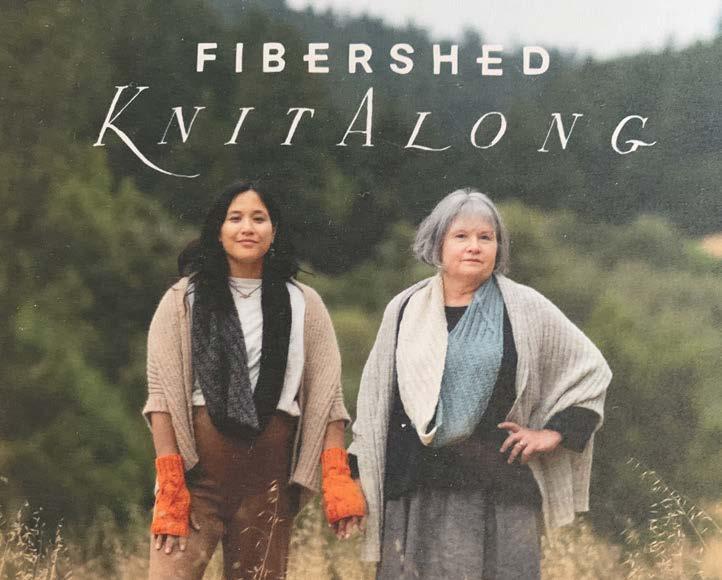
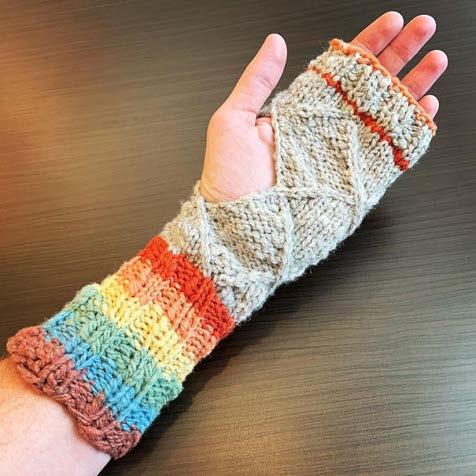
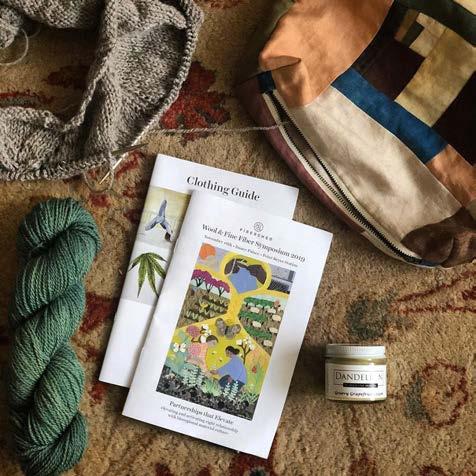
The Fibershed Knitalong patterns developed in 2019 were so lovely, we’ll continue to celebrate and promote this project throughout 2020. The three patterns, Ocean Beach Mitts designed by Alice Tang, Bolinas Ridge Cowl designed by Marlie De Swart, and Coast Side Cardigan designed by Alisha Reyes, can all be quickly accessed through the Fibershed Knitalong website: bit.ly/2019FibershedKAL
If you would like to have additional Knitalong postcards to promote yarn kits during this year, contact Heather Podoll at heather@fibershed.com.
We invite you to enjoy ongoing knitting with these wonderful patterns, selling yarn, and sharing your fiber and finished garments on social media and at our in-person Fibershed events!
The photos below, shared on Instagram, demonstrate the fun that members of the Fibershed knitting community have been having with the variety of yarns available from our local farms, ranches, natural dyers, and mills in their unique constructions with the three Fibershed Knitalong patterns. (all photos courtesy of the knitters on Instagram)
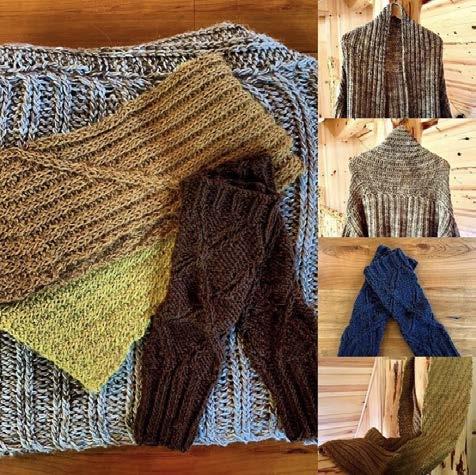
cardigan with Fiber Circle Studio’s merino and mohair yarns; cowl is made with Deep Creek Yarn’s local alpaca blended yarn.
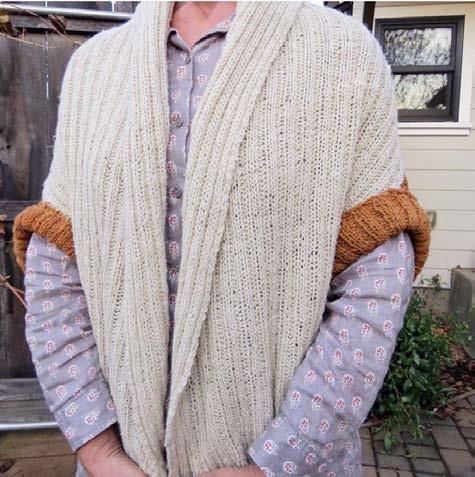
@chicoflaxtolinen’s cardigan made with a new blend of 35%flax, 65%wool spun at Mendocino Wool Mill, accent yarn naturally dyed with coreopsis flowers.
Due to changes in funding by the University of California, Hopland Research and Extension Center has been experiencing changes in programming and operations.
The 1100 head flock of sheep is now just over 100 head of sheep. Due to this flock size change, there was a question for some time if the institution would be able to continue its well-loved and well-attended shearing school.
After meeting with the leadership of the Hopland Research and Extension Center, and listening to their ideas for how to move forward under different circumstances, we at Fibershed were excited to learn that the shearing school would and could continue as a ‘holistic shearing’ small flock management educational offering.
Fibershed and the Hopland Extension Center are collaborating to


cardigan-in-the-field, knitting her gorgeous Ouessant
ensure that this new educational offering makes its way to the public. Shearing teacher, Trevor Hollenback, will make his way from Idaho for two weeks of training this spring. The assistant trainer is still TBD. He will share how to work with both handheld and overhead shearing equipment.
The new objective of the school is to: ‘Build a qualified workforce of small flock shearers with confidence in sheep handling and understanding of best practice in shearing for the health of the sheep and the shearer.’ Topics include ethical shearing practices, sheep management practice, and sheep health—as well as short-duration presentations specific to land management (carbon cycling) and an overview of new animal assurance programs.
The class will be offered to ten people per training, and each of the two training sessions will be six days long, with 4.5 days of shearing and 1.5 days of instruction. A meal plan will now be included for a small extra fee. Open registration begins on February 14 and will last until February 21. (bit.ly/HoplandShearing)
Fibershed’s Northern California Producer Program has been growing in leaps and bounds as word spreads to designers, farmers, and supply-chain partners who want to join the movement for a bioregional fiber economy. Nearly 40% of Fibershed’s 164 current producers joined in the last two years, and we as a staff are working hard to evolve our offerings to meet the needs and goals of our members. We invite you to read on for select updates and plans for 2020, and if any of these offerings spur an interest, please reach out to Molly at molly@ fibershed.com for more information.
Our community holds a beautiful diversity of farmers, ranchers, artisans, and contract grazers (see the pie chart for a look at membership by type of work). Our 99 ranchers and farmers tend 157,285 acres of land across 33 counties. And a full 37 of those 99 landbased producers have been verified as Climate Beneficial™ or Climate Beneficial Transitional, making possible rich partnerships with regenerative fashion brands including Elizabeth Suzann, The North Face, and Coyuchi. Our inspired community of artisans – 52 at last count – weaves natural fibers and dyes into their products, shifting material culture through inspired reverence of raw materials. We know the challenges of sourcing to meet Fibershed’s guidelines, and we stand ingratitude of those working in partnership to build this emergent economy. Your effort does not go unnoticed: the Fibershed Producer Directory is one of our top visited pages on our website, with 18,411 page views in 2019! (On that note, please take a look at your profile and make sure your information is up to date).
In 2019, producers sold $30,784 in products at the Symposium and Gala Marketplaces. Our sister corporation, the Northern California Fibershed Agricultural Cooperative, has picked up where the nonprofit leaves off, setting up pop-up events and an online marketplace of goods where producers can sell directly to consumers. We are excited to explore more opportunities for commercial-scale Climate Beneficial goods in 2020 by researching a potential wool pool for fleeces in the mid-twenties micron count. We offer free testing of the micron count of your wool.
In addition to the 2020 Symposium and our two in-person producer meet-ups in Berkeley and the Capay Valley, we will host two regional events in 2020 to bring more opportunities to connect and learn from one another outside of the Sonoma-Marin hub.
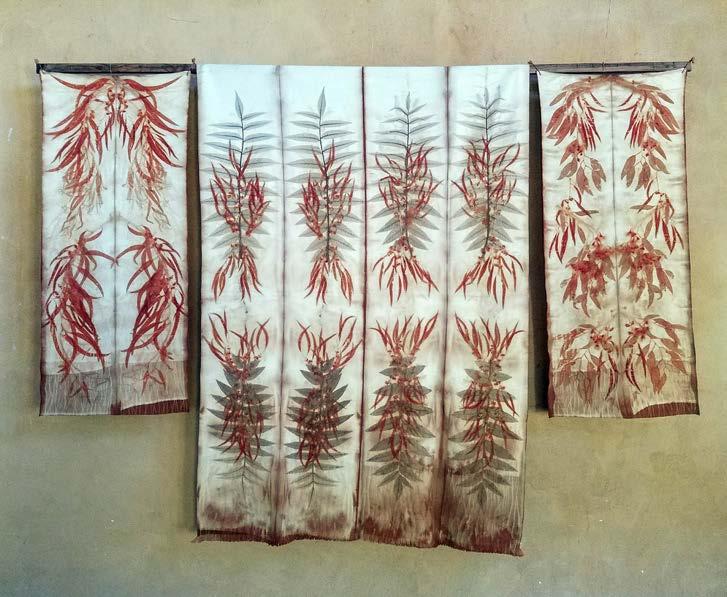
Climate Beneficial™ blanket and wall hangings by Earth My Body. Eco printed with eucalyptus and black walnut leaves on Lani’s Lana Community Supported Cloth, 100% fine rambouillet wool.
Mills and Manufacturers
Farmers and Ranchers
The work has grown well beyond our keystone events, and we celebrate new partnerships stitched across the fibershed: Black Rock Ranch hosting Kori Hargreaves and Rebecca Burgess for dye classes; Lani’s Lana and the Warner Mountain Weavers inviting Keyaira Terry and Cory Gunter Brown for workshops; Judi Pettite’s collaboration with PT Ranch to grow, process, and share local indigo (with seedlings from Craig Wilkinson); and Stephany Wilkes’ incomparable “wool tasting” session at Fiber Circle Studio. We love promoting these events via our social media and online calendar, and especially sharing photos from the events, and we invite you to continue sharing information about upcoming collaborations and the documentation of these experiences. Other resources for you, our producer community, include:
• 100 Fibershed certified product tags annually
• Exclusive access to our online Business Curriculum
• The opportunity to be featured on the Fibershed blog (including a free photo session)
• Use of our logo on your website
• 10% off tickets to our events
• Support for seeking Climate Beneficial verification.
2020 marks four years since our first round of soil testing under the Climate Beneficial program. In the fall of this year, we will begin resampling those sites where samples were collected and processed at the lab in 2016 in order to establish a baseline of soil organic carbon (SOC) to inform the producer and to measure changes in SOC associated with management and carbon farm practice implementation. As we prepared for that work, we spoke to a number of soil scientists, including our collaborator and Carbon Cycle Institute staff member Lynette Niebrugge, who warned that “noise” in the data may preclude a measurable increase in soil organic carbon (SOC) at every site. Meaning, even when producers are succeeding at improving the health of their soil, SOC may not increase due to the limitations of the testing. Imagine, for example, a soil core taken right beneath your ewes’ favorite dumping grounds vs. one that happens to be too dry or rocky to hold onto their excrement. It is easy to imagine how numbers might get skewed. We are proponents of citizen science and digging into imperfect data for complex ecological systems, so we still plan to re-test the 2016 – 2019 testing sites, but we are revising some of our protocols moving forward to reflect the best available science better.
Starting in 2020, land-based producers who are interested in pursuing Climate Beneficial verification will be asked to complete an Entrance Survey to help us better understand your motivations and curiosities about carbon farming. This is not meant as a deterrent - we would be glad to help you fill out the survey in person or over the phone. The purpose is for the survey to help us provide more tailored services to you as you move through the Climate Beneficial pipeline (see adjacent graphic), including more site-specific soil testing consultations. We are also enthusiastic about helping you advance carbon farming practices on your land, starting with support for an application to the Healthy Soils Program and continuing through the advancements to the Carbon Farm Fund later in 2020.
Participants in the Climate Beneficial program have access to a special web badge, unlimited Climate Beneficial tags, purchase of a felted sign made of Climate Beneficial Wool from Jackie Post, and special marketing opportunities.
Thank you for reading and taking part in our community! We welcome your feedback, questions, and ideas about these updates.
Intensively Managed (< 50 acres)
Mid-size Operation (> 50 acres)
In-field soil evaluation
Commodityscale Operation (>1000 head or 500 acres)
Organic carbon and bulk density test of key soil types
Model-based assessment
Contract Grazers
▶ Connect with the Community Ag Director (CAD)
▶ Survey reviewed by Fibershed team
Evaluated on a case-by-case basis
Annual carbon farming practice, verified by photos
Annual carbon farming practice, verified by photos
Annual carbon farming practice, verified by photos
Annual prescribed grazing, verified by photos or satellite imagery
▶ Farm visit or modeled analysis of soil composition
▶ Phone call to discuss results with Fibershed soil scientist
Farm Planning
Farm Planning
Farm Planning
Operational planning, determined on a case-by-case basis
▶ Friendly followup from the CAD to share your practice implementation with Fibershed
▶ Promotional and potential product development possibilities through the Fibershed network
▶ Connect with Fibershed staff to learn more
For more information, contact Molly@fibershed.com
All presentations from the 2019 Wool & Fine Fiber Symposium are now online – watch or listen in on the Fibershed website (bit.ly/19WoolSymposium) or YouTube channel to hear practical tips and perspectives on:
• Working with Resource Conservation Districts to trial conservation and carbon farming practices
• Understanding the connections between American land use, natural fiber and dye systems, and chattel slavery
• Growing creativity and revenue streams through farmer and artisan collaborations
• Supporting regional fiber manufacturing with a look at the current capacity of our region’s wool mills and our region’s textile waste
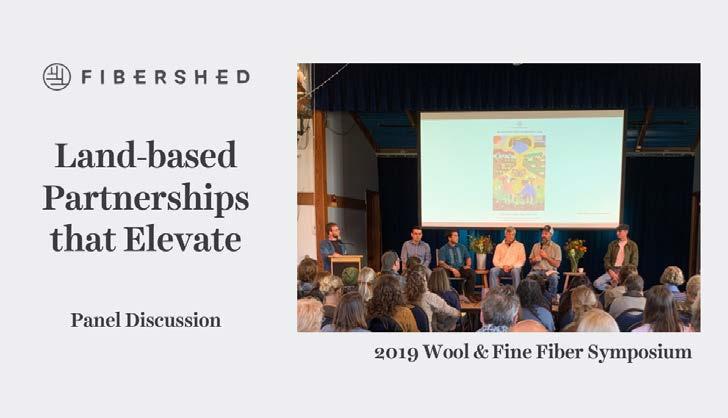
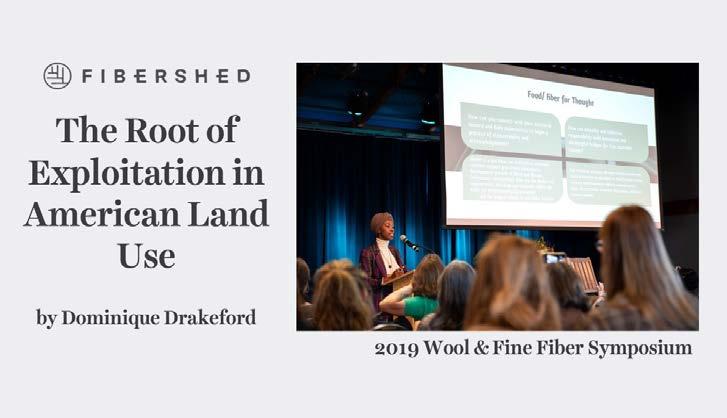
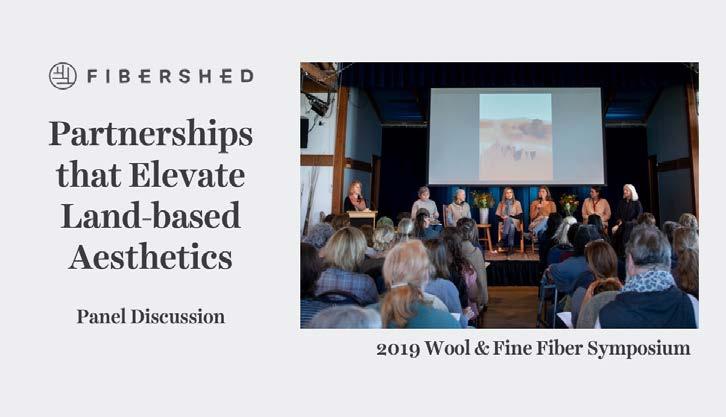

Fibershed is launching a new initiative to catalyze the regional development of natural fiber and dye infrastructure. The Regional Fiber Manufacturing Initiative (RFMI) aims to identify, prioritize, and finance needed infrastructure for legacy businesses to allow for their growth and increased functionality. Simultaneously, we aim to identify and actualize the missing talent and equipment required to generate a fully functioning soil-to-soil textile supply chain in our region. To accomplish this, the RFMI is pulling together experts from various fields throughout the supply chain, including engineers, business consultants, European textile experts, regional fiber producers and processors, designers, and others.
Analogous efforts can be seen in the slow food and food justice movements, where economic incubators throughout the United States and beyond have been designed by nonprofits to evaluate the landscape of food systems and to determine existing assets and strategies for filling in needed ones.
In the first half of this year, we are mapping existing and needed equipment and personnel and envisioning paths forward. Once the map and vision are fleshed out, we will focus on supporting two to three projects within the first 18 months, including developing business plans and funding strategies. We will focus on large-scale projects (>$500K) that play key roles in the regional ecosystem, such as a large-scale wool scour or a bast fiber processing facility. We are also looking for funding mechanisms for smaller-scale projects that either feed immediately into the larger textile system or are a step toward that system. We realize that not all businesses want to scale too soon or too fast. The availability of such support will be determined after we’ve completed our mapping and prioritization in the first half of this year, and we expect to close our first capital raise no earlier than the end of this year.
If you have questions or would like to learn more, contact Nick Wenner at nicholas@fibershed.com.

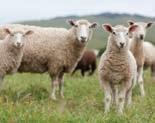

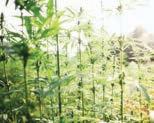





Throughout the seasons, across social media or the farmer’s market stall, we see examples of creative collaborations from the Fibershed Producer network – the synergistic pairings and inspiring outcomes when growers, makers, planners, and creators come together with local fibers and local natural dyes.
If you are hosting a workshop, retreat, collaboration, or other experiential events with fellow Fibershed members, we encourage you to share your vision and information with Fibershed. Please send us logistical details on the offering as well as photos of the people, place, techniques, or items—we offer free listings on the Fibershed community events calendar and draw from the calendar to highlight your work on Fibershed digital promotion channels (please provide calendar items at least 3 weeks prior to the event date to support cross-promotional efforts). After the event has passed, we encourage you to follow up with photos of the experience, so that we can share the beauty of your skill, seed inspiration throughout our global and grassroots community, and grow support for your future offerings.
Contact Jess Daniels at jess@fibershed.com
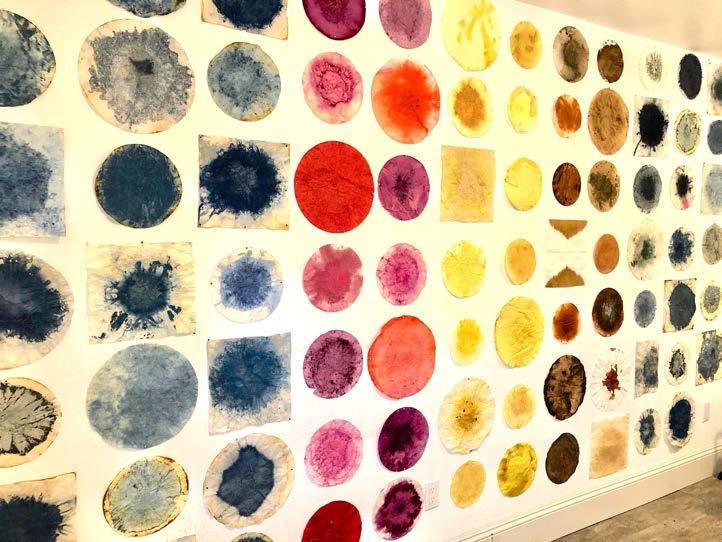
from
Marie Hoff collaborated with Chico Flax to host a hedgerow planting and education workshop
Fiber Circle Studio + Craig’s Indigo community indigo dye workshop, using locally-grown composted indigo in collaboration with Chico Flax
Judi Pettite’s 2019 studio installation of the ephemera of color extraction process from her ink and paint making research and workshops. The paper filter is used in the final stage of the filtration process.
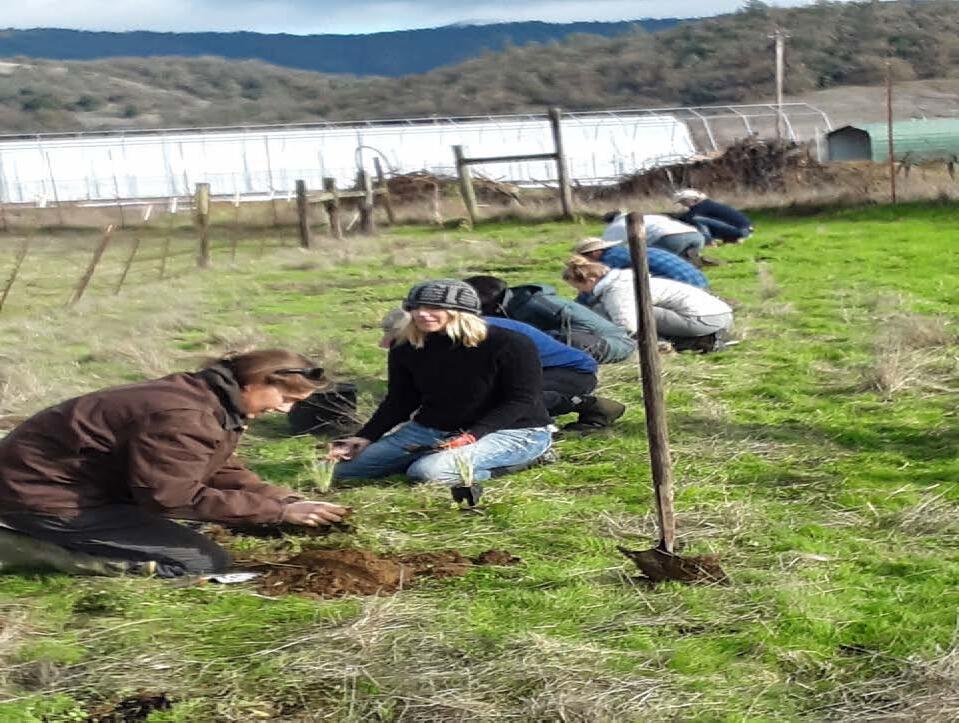
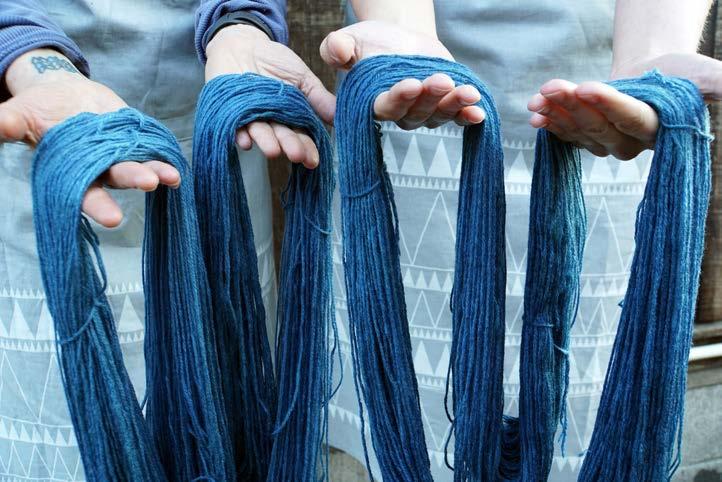
The Fibershed Learning Center in Forest Knolls, California, will open its doors this Spring! The 835-square-foot building plus outdoor classroom and garden will provide an array of hands-on educational opportunities for the public.
If you are a teacher who is interested in teaching a workshop or giving a presentation at the Center, we would like to hear from you. Please contact Dustin Kahn (dustinkahn@gmail.com) for more information.
Once the Learning Center is ready, daylong classes will be offered between three and four times per month, and shorter duration classes will be offered throughout the week. Public presentations and intentionally designed gatherings will focus on bringing people together to learn and discuss the greatest and most concerning issues of our time, in tandem with direct opportunities to engage in solutions that we can work together to activate at the local level.
The Learning Center will also house a natural dye and fiber seed library and a living library of our bioregional textile culture that will be a resource for students, designers, and makers. There will also be locallygrown tactile samples—from fermentation indigo applied to Climate Beneficial Rambouillet twill fabrics, to hemp and Corriedale wool blends and a seasonal color palette of natural dyes applied to hundreds of locally-grown fiber samples. The full textile library will be available for loan and usage, both in and outside of the physical space. It will also support designers and makers with sample materials to inspire product development, from knitting patterns to finished products and more.
For some time, Fibershed has felt the need to create a grounding force that serves in its effort to ‘re-village’ the community. We are grateful to have an opportunity to hold space for these activities and community resources.
BY KACIE HODGES
More often than not, big ideas start out small. This one was born from a conversation had around a potluck dinner table on a farm in Tracy City, TN, sometime around early September 2018. In an attempt to create an annual gathering, we decided to take that potluck dinner one step further. Our region is home to an incredible variety of fiber folks, each of whom helped contribute to the diverse capabilities of the Southern Appalachia Fibershed. Since we consume a rather wide radius (~250 miles from Knoxville), the ongoing goal is to host events throughout the region to make them accessible to as many people as possible.
This was our first time planning an event in Nashville, and we couldn’t have been more lucky to partner with The Nashville Food Project (www.thenashvillefoodproject.org) as our gracious hosts. The Nashville Food Project is home to a crew of dedicated staff and volunteers who “grow, cook, and share nourishing food, with the goals of cultivating community and alleviating hunger in [Nashville].” As soon as we stepped foot in the building, we knew it was the perfect space for this event. Participants came from a wide range of backgrounds making for a truly unique collection.

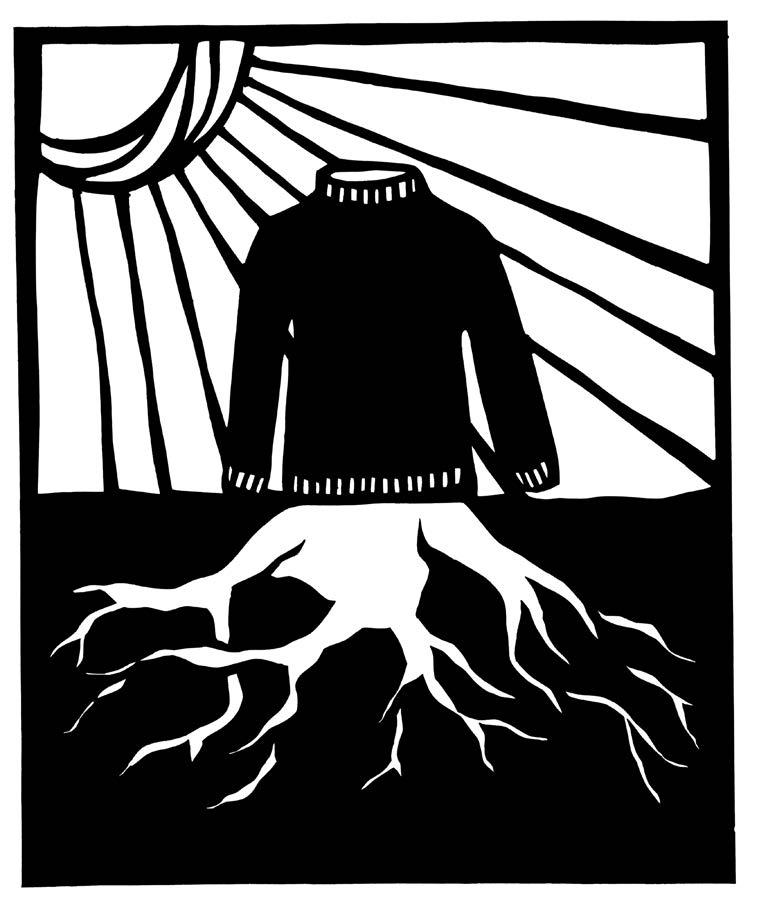
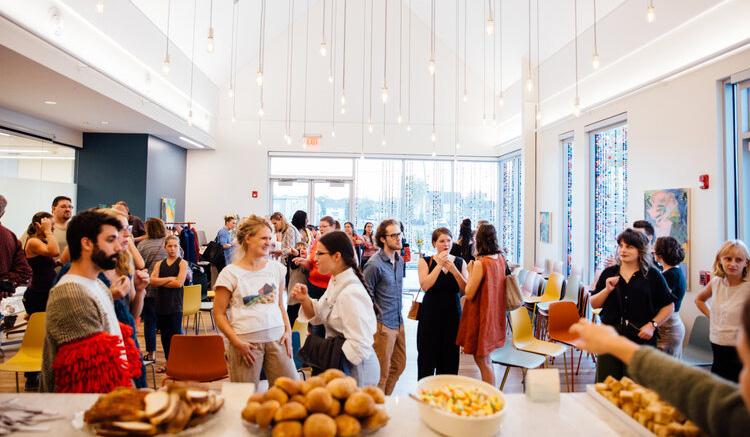
Our models ranged from under 6 to above 60, each one graciously volunteering their time to come and help bring life to each garment. The evening began with a showcase of garments and accessories. Each model took their turn meandering around the crowd. Our emcee, Robin, told the story of each garment and a bit about its maker. Almost 20 looks were shown, highlighting over a dozen designers + makers. Each one was created from grassroots collaborations, born from potluck dinners, fiber shows, random email inquiries, and beyond. Each piece was made with its impact on the planet in mind. Whether homegrown, naturally dyed, repurposed, or refashioned, each piece had a common virtue of creating with materials that are locally sourced and consciously curated.
When we began planning this event, our goal was to use as much locally sourced food as possible. Throughout this process, we learned just how much the Nashville area has to offer and was honored to celebrate the hard work of numerous farmers, bakers, and community gardens after the showcase portion of the evening had commenced.
The evening was nothing short of magic. It would not have been possible without at least a dozen and a half unsung heroes, who seamlessly worked together to pull off a truly community-focused event that highlighted over a dozen local mills, makers, + designers.
Endless gratitude to Tallu at the Nashville Food Project for allowing us to follow through with this vision. Stay tuned for more collaboration opportunities, and please get in touch if you have an interest in hosting a future event.
Knoxville, Atlanta, Louisville, Lexington. . . we’re coming your way!
Learn more about the Southern Appalachia Fibershed by visiting safibershed.com and following @southernappalachiafibershed on Instagram
PO Box 221, San Geronimo, CA 94963
hello@fibershed.com • www.fibershed.org

REBECCA BURGESS
Rebecca Burgess is the Executive Director of Fibershed, and Chair of the Board for Carbon Cycle Institute. She has over a decade of experience writing and implementing handson curriculum that focuses on the intersection of restoration ecology and fiber systems. She has taught at Westminster College, Harvard University, and has created workshops for a range of NGOs and corporations. She is the author of the best-selling book Harvesting Color, a bioregional look into the natural dye traditions of North America, and Fibershed: Growing a Movement of Farmers, Fashion Activists, and Makers for a New Textile Economy, released in 2019. She has built an extensive network of farmers and artisans within our region’s Northern California Fibershed to pilot the regenerative fiber systems model at the community scale.

JESS DANIELS
Jess Daniels is the Director of Communications & Affiliate Programming for Fibershed, where she creates written and visual collateral connecting wearers to the ecological and social source of their clothing, and facilitates an international grassroots network of communities building soil-to-soil fiber systems. She has a decade of experience working to strengthen local food and fiber systems, from urban farming and education to sustainable agriculture advocacy campaigns and litigation, and her work has been published in the journals Agriculture and Human Values and Making Futures. She holds a B.A. in Environmental Studies and Visual Art from Brown University, where she completed textiles coursework at Rhode Island School of Design and studied with the International Honors Program ‘Rethinking Globalization’ field school in India, Tanzania, New Zealand, and Mexico.
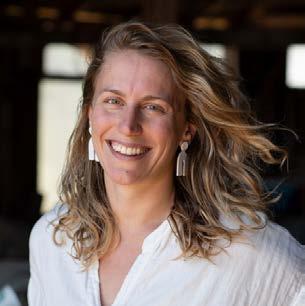
Molly Oshun is the Community Agricultural Director for Fibershed. She is a Sebastopol native, a water resources engineer, and a committed community organizer. Prior to Fibershed, Molly worked on fire resilience at Sonoma Water, community flood planning in Southside Chicago, and urban design throughout the Bay Area. Molly holds a B.S. in Civil and Environmental Engineering from Stanford, a certificate of conflict mediation, y habla español con fluidez. A passionate gardener, backpacker, volunteer prescribed burn firefighter, and folk herbalist, Molly is grateful to join a community of soil stewards and fiber visionaries. Molly directs the producer program and serves as the liaison to the Northern California Fibershed Agricultural Cooperative.

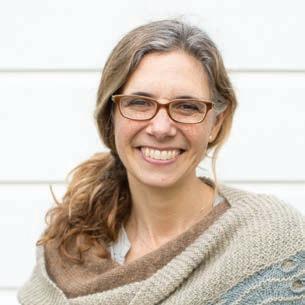
Heather Podoll is the Policy Coordinator for Fibershed. She manages communication and outreach relating to public grants and other core Fibershed projects. Heather holds an M.S. in Agricultural Ecology from UC Davis. She has spent the past 20 years involved with research, practice, promotion and teaching of sustainable and organic agricultural systems, working with a range of nonprofit, philanthropic and educational organizations. As an avid knitter, she is delighted to bring together her background in ecological research and agricultural systems with a holistic and regional perspective on fiber arts and textile systems.
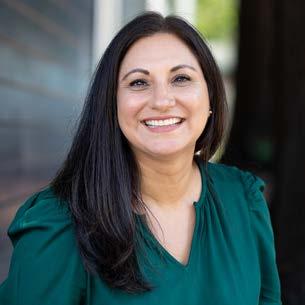
Marisol Valles is the Deputy Director for Fibershed. She is a seasoned executive with over 20 years of experience in non-profit and hospitality management graduating with a BA from San Francisco State University. Through her solid management, a keen eye for detail and consistent application of policy, Marisol oversees the operations and human resources for the organization.
Fibershed works with a talented team of consultants and project leaders, all of whom conduct specialized services for the organization. Thank you to Lynette Niebrugge, Olivia Tincani, Erin Walkenshaw, and Nicholas Wenner for their contributions to this newsletter.
